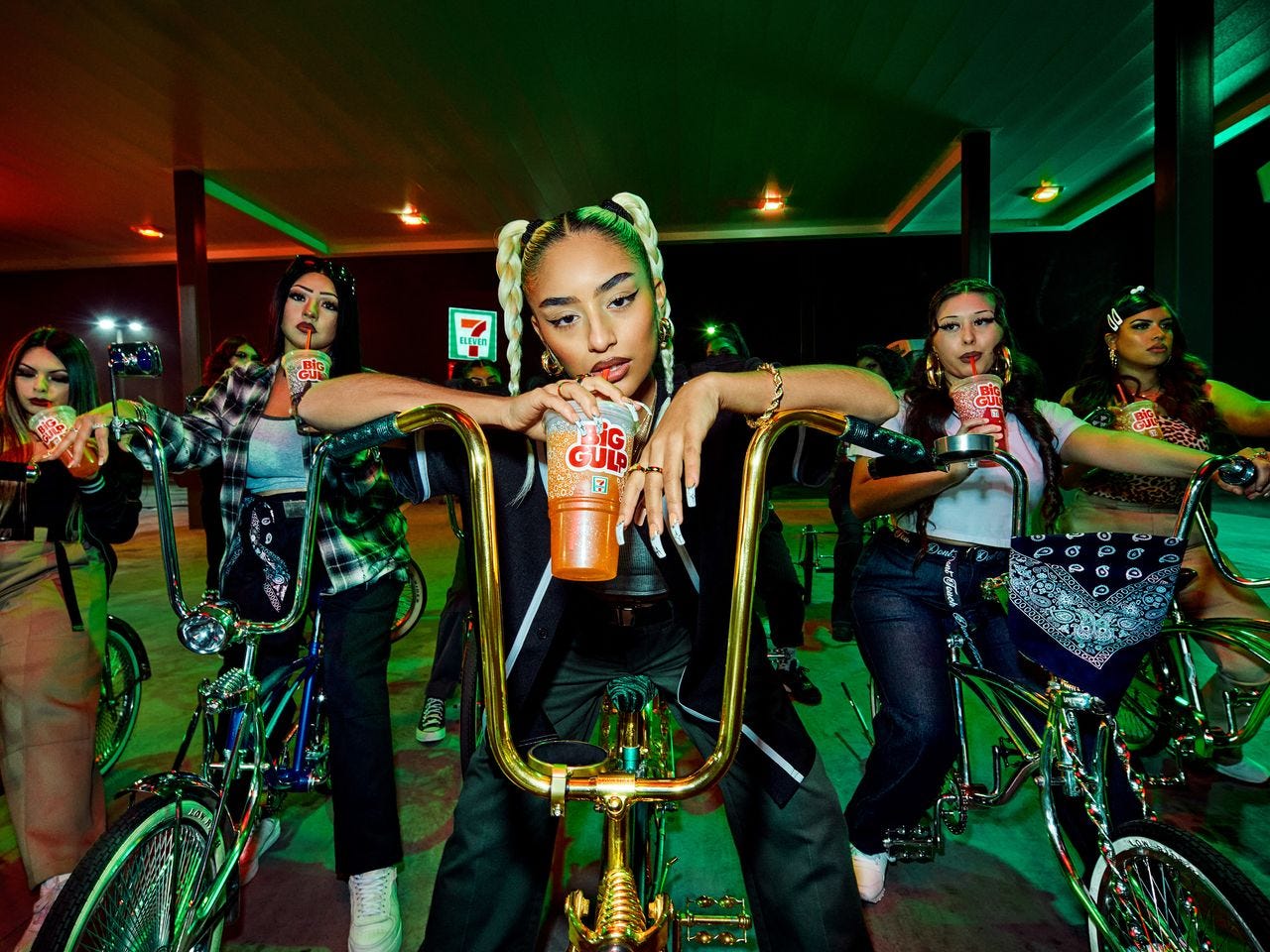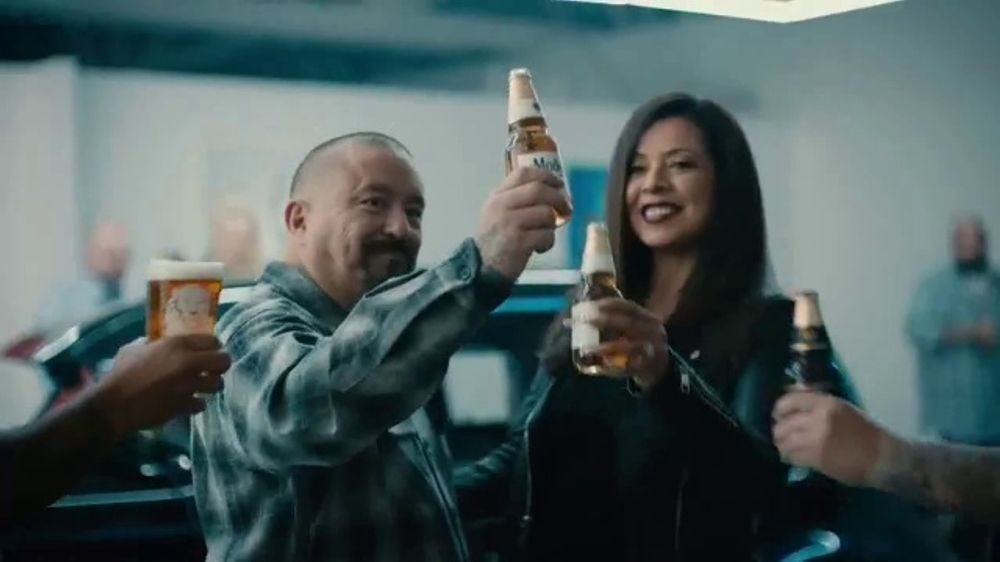Chicano Culture Remains Bold, Beautiful, and Defiant
Love it or hate it, Chicano culture is one of the most dynamic cultures ever organically created.
In 2021, 7-Eleven launched a new ad campaign showcasing Chicanas on lowrider bikes, cruising through the parking lot of a convenient store with Big Gulps.
The ad, directed by Harmony Korine, quickly went viral and preceded a spate of ads targeting Mexican Americans by everyone from Modelo to Facebook to O'Reilly Auto Parts.
For the most part, 7-Eleven’s ad was well received. But it wasn’t without its critics. As usual, there were grumblings about “negative representation” and “stereotypes.” One person even complained that the ad was neither realistic or reflective of most U.S. cities (an impossible demand for any campaign to meet when you think about it).
Ultimately, however, most of the criticisms were predictable. Why? Because they were the same criticisms that have been hurled at urban Chicano/a culture for decades.
Yet when the usual criticisms of Chicano culture are picked apart, you will find that they are almost always masking a deeper problem altogether: The critic’s own lack of context.
That is, the loudest criticisms of Chicano culture usually come from people with no connection to Chicano/a culture to begin with. As a result, the criticisms are often rooted in ignorance more than logic.
After all, I can’t think of anything more illogical than letting the height of a bike or car determine how “negative” something is perceived. Can you?
Of course, not everyone is crazy about the mainstreaming of Chicano culture (myself included). Over time, Chicano culture has largely gone the way of Polynesian tattoos.
That being said, the reason companies love to focus on urban Chicano culture is simple: Because it is a fascinating culture! It is vibrant, bold, flamboyant, colorful, and distinct. It is something that Mexican Americans should be proud of, not ashamed of.
It is a culture rooted in struggle, defiance, self-determination, and perseverance.
Does anybody believe a Modelo ad spotlighting brain surgeons would resonate or generate the same amount of buzz? Of course not. (Unless the surgeons were all cholas, that is).
At the end of the day, the goal of companies like 7-Eleven and Modelo is to connect with average consumers. It’s that simple. And let’s face it, there is no shortage of lowriders in the west. On the contrary, we are living in the middle of the largest lowrider resurgence since the 90s (which in turn was the largest resurgence since the 70s).
With this in mind, it is smart of companies to embrace and celebrate Chicano culture. After all, not all people who drive a lowrider are the same. As a result, lowriding and “positively representing different types of people” don’t have to be mutually exclusive.
To illustrate this point, Lowrider Magazine runs an entire video series entitled “lowrider role models,” spotlighting the diversity of lowrider enthusiasts.
Do companies always get everything right? No. To complicate the discussion, the politics of the Chicano movement during the 60s has largely taken a backseat to the more visual, aesthetic side of Chicano culture.
However, this doesn’t mean that the growing popularity of Chicano culture doesn’t still result in a net benefit for both the people in the community and the businesses involved.
Love it or hate it, Chicano culture is one of the most dynamic cultures ever organically created. It is celebrated and emulated across the world, from Russia to Japan. It isn’t going anywhere any time soon. If Mexican Americans don’t own it, someone else will.
And if critics don’t like it, who cares?





I apprecIate this perspective. Most culture is organically created, needs the aesthetics and visual components to take root. And so true that the political side of those roots are often left to the sidelines. Chicano power.👊🏾 Ahua!